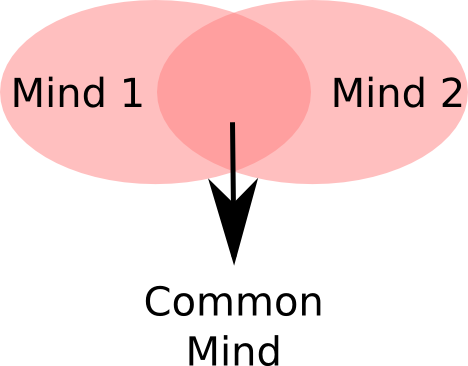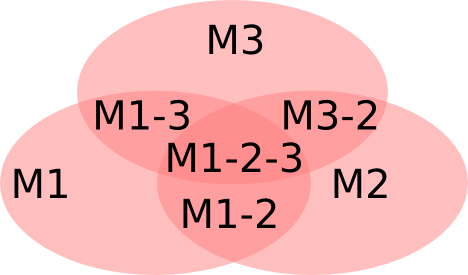Does groups of living entities form minds of their own?
And if so, how do they manifest and interact with us and can they be considered parts of our society?
In the last years, I come to think more and more about social interaction seeking to better understand them and find a better social model.
Few billions cells are the constituents of our own bodies. They generate entities we identify as “mind” or “consciousness”. If we extend this concept then any groups of people will generate “wrapping” minds of their own inheriting the common features of the underlying minds of the group’s individuals.
Those minds seem to behave as new live entities which are born live an die.
You can picture better in your mind this phenomena by watching this funny animation from “Finding Nemo”.
Of course this is an exaggeration we all know but it works like an magnifier of the central idea.
You can also visualize it if you think of the various groups people form, a line at the bus or ticket booth, a demonstration in the street, and probably most notably sport fans.
Those groups form themselves when the conditions are right have a life then sooner or later disassociate themselves and die.
This means that when there are two living entities, they will generate a third entity, a common mind inheriting their common thinking in a fully unconscious process (most of the time).
When there are three living entities in a group, we can identify one “mind” of the whole group but as well all the smaller groups in all possible combinations which will account for 4 four new entities in that group. So a group of 3 (three) entities will in fact account for 2^3-1=7 (seven) minds!
Interesting is that those new minds tend to interact as they would be “real people” and introduce new variables in the social systems, hence increasing their complexity. The group mind abilities, are highly dependent on the number and the abilities, of the real minds in the group. For small groups this may account for very little and this explains why usually their existence pass unobserved.
This observation, could give more insight in the “crowd” behaviour, and the new “occupied” movements are interesting places to look for examples of “mind wrappers”.
I found fascinating this video about the crowd behaviour at G20 in Toronto 2012:
This interview hit me with the idea, that maybe, just maybe, at G20/Toronto/2012 what happened between some of the demonstrator groups and the police groups, could have been the result of group mind behaviour and not necessary a well planned and carried set of activities, from both police and citizens of Toronto. I have no way to validate this, but based on the observations I’ve made so far, could a real possibility.
One hint about the groups and their interaction, come to me from the brilliant scene in the movie “A beautiful mind”, where Jon Nash find his inspiration and creates a new break trough in the “Governing dynamics/Game Theory”. In few words his theory can be synthesized:
“The best results come when everyone in a group does what’s best for himself and the group”
This theory, is known as the “Nash Equilibrium”, and brought a Nobel Prize to John Nash.
However, if we think of the groups as individuals, then it seem that Adam Smith was also right when he postulated that:
“The best results come when everyone in a group does what’s best for himself”
if we include the group generated minds as supplemental group entities.
This could mean that both Nash and Smith are right. They simply look at the same problem from different angles.
It is also of a paramount importance to understand that “equilibrium” or “balance” does not imply simple equality but a multidimensional balanced relationship. I have personally lived trough a society where “All people are equal”, was promoted each day, but we all learned, that in fact, “some were more equal than others”, and in the end, that group simply vanished in a revolution. My feeling is that when all entities or minds in a group, including the “wrapper minds”, treat each other with respect, and spend time to understand each other, the whole group have a much better chance to survive, and even more important, to thrive .
What would all this have to do with our day by day life? It sounds like a clever contraption of the mind, but now what?
My point is that, we are now stepping in a new era where the information is produced, shared, stored and accessed at an unprecedented rate. Social networks like FaceBook, Tweeter, Tumblr, Google+, etc are part of this new era and when connected with new and powerful ways to mine all this information by using the new ways we call “BigData” (BigDataUniversity) or like IBM’s Watson the group behaviour will be harder and harder to ignore.
This leads to an interesting questions. How do we get aware of group entities and how do we communicate with them? And the last and maybe the most important of them all: Are we aware of our common planetary level generated mind? If we do will it be important for the future to be able to communicate with it?
Maybe the idea exposed in the movie “Avatar” is not so far fetched after all.
Pretty crazy idea? Maybe not…
I’m preparing a number of new articles dedicated to the communication theory and practical use.
Stay tuned …
References:
Other explorations in this domain:
- Birth of the global mind
- http://www.globalmindproject.com/
- http://noosphere.princeton.edu/
- http://en.wikipedia.org/wiki/Global_brain
Group behaviour with various “mind” capabilities:
School of fish:
School of birds:


